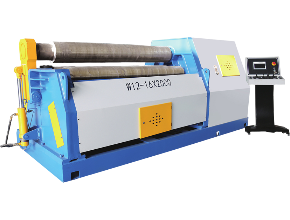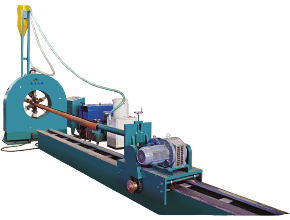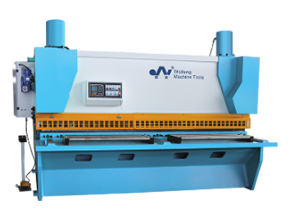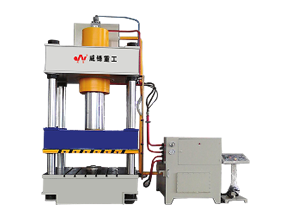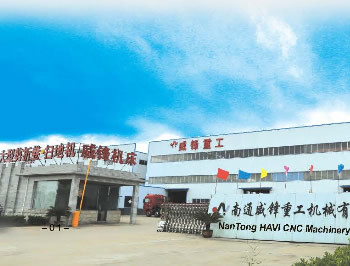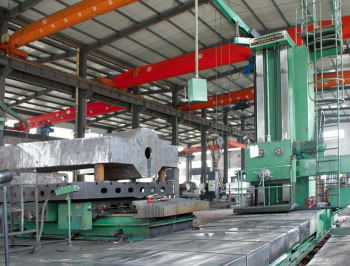Understanding the Functionality and Applications of Mechanical Shearing Machines
Release Time:
2025-06-23
Mechanical shearing machines are essential tools in various industrial applications, particularly in the field of metalworking. They are designed to cut or shear materials such as metal sheets, plates, and strips with precision and efficiency. The operation of these machines generally involves the application of a shearing force, which is generated through hydraulic or mechanical means, to produce clean, straight cuts in the material.
One of the critical components of a mechanical shearing machine is its blade system. The blades must be made of high-quality, durable materials to withstand the stresses of cutting through tough metals. The design and angle of the blades are carefully engineered to ensure optimal cutting performance, minimizing material deformation and maximizing edge life. Regular maintenance and proper adjustment of the blades are crucial to maintaining the machine's efficiency and output quality.
The shearing process itself can be classified into several categories, such as guillotine shearing, rotary shearing, and hydraulic shearing. Each type of shearing machine is designed for specific applications and material thicknesses. For instance, hydraulic shearing machines are particularly favored in industrial settings due to their ability to handle thicker materials with greater force and precision. This capability makes them indispensable in sectors such as automotive manufacturing, construction, and aerospace.
In addition to their cutting function, mechanical shearing machines can also be integrated with other operations, such as bending or punching, to create multifunctional workstations. This integration enhances productivity and reduces the need for multiple machines, allowing for a more streamlined manufacturing process.
Understanding the capabilities of mechanical shearing machines allows professionals in the hydraulic machinery and components industry to make informed decisions regarding equipment selection, maintenance, and operational efficiency. Factors such as machine size, cutting capacity, and automation features should be carefully evaluated to align with production needs.
Moreover, advancements in technology are continuously improving the performance of mechanical shearing machines. Incorporating programmable logic controllers (PLCs) and computer numerical control (CNC) systems can enhance precision and reduce human error, resulting in higher quality output. These innovations not only increase productivity but also facilitate the handling of complex cutting patterns, which is becoming increasingly important in modern manufacturing environments.
In conclusion, mechanical shearing machines are indispensable tools in the industrial sector, particularly within hydraulic machinery applications. Their ability to deliver precise cuts, coupled with advancements in technology, ensures that they remain a vital component in the evolution of manufacturing processes. Understanding their functionality and applications can significantly benefit professionals in the industry, enabling them to optimize their operations and enhance their competitive edge.
One of the critical components of a mechanical shearing machine is its blade system. The blades must be made of high-quality, durable materials to withstand the stresses of cutting through tough metals. The design and angle of the blades are carefully engineered to ensure optimal cutting performance, minimizing material deformation and maximizing edge life. Regular maintenance and proper adjustment of the blades are crucial to maintaining the machine's efficiency and output quality.
The shearing process itself can be classified into several categories, such as guillotine shearing, rotary shearing, and hydraulic shearing. Each type of shearing machine is designed for specific applications and material thicknesses. For instance, hydraulic shearing machines are particularly favored in industrial settings due to their ability to handle thicker materials with greater force and precision. This capability makes them indispensable in sectors such as automotive manufacturing, construction, and aerospace.
In addition to their cutting function, mechanical shearing machines can also be integrated with other operations, such as bending or punching, to create multifunctional workstations. This integration enhances productivity and reduces the need for multiple machines, allowing for a more streamlined manufacturing process.
Understanding the capabilities of mechanical shearing machines allows professionals in the hydraulic machinery and components industry to make informed decisions regarding equipment selection, maintenance, and operational efficiency. Factors such as machine size, cutting capacity, and automation features should be carefully evaluated to align with production needs.
Moreover, advancements in technology are continuously improving the performance of mechanical shearing machines. Incorporating programmable logic controllers (PLCs) and computer numerical control (CNC) systems can enhance precision and reduce human error, resulting in higher quality output. These innovations not only increase productivity but also facilitate the handling of complex cutting patterns, which is becoming increasingly important in modern manufacturing environments.
In conclusion, mechanical shearing machines are indispensable tools in the industrial sector, particularly within hydraulic machinery applications. Their ability to deliver precise cuts, coupled with advancements in technology, ensures that they remain a vital component in the evolution of manufacturing processes. Understanding their functionality and applications can significantly benefit professionals in the industry, enabling them to optimize their operations and enhance their competitive edge.
Previous Page:
Related News


